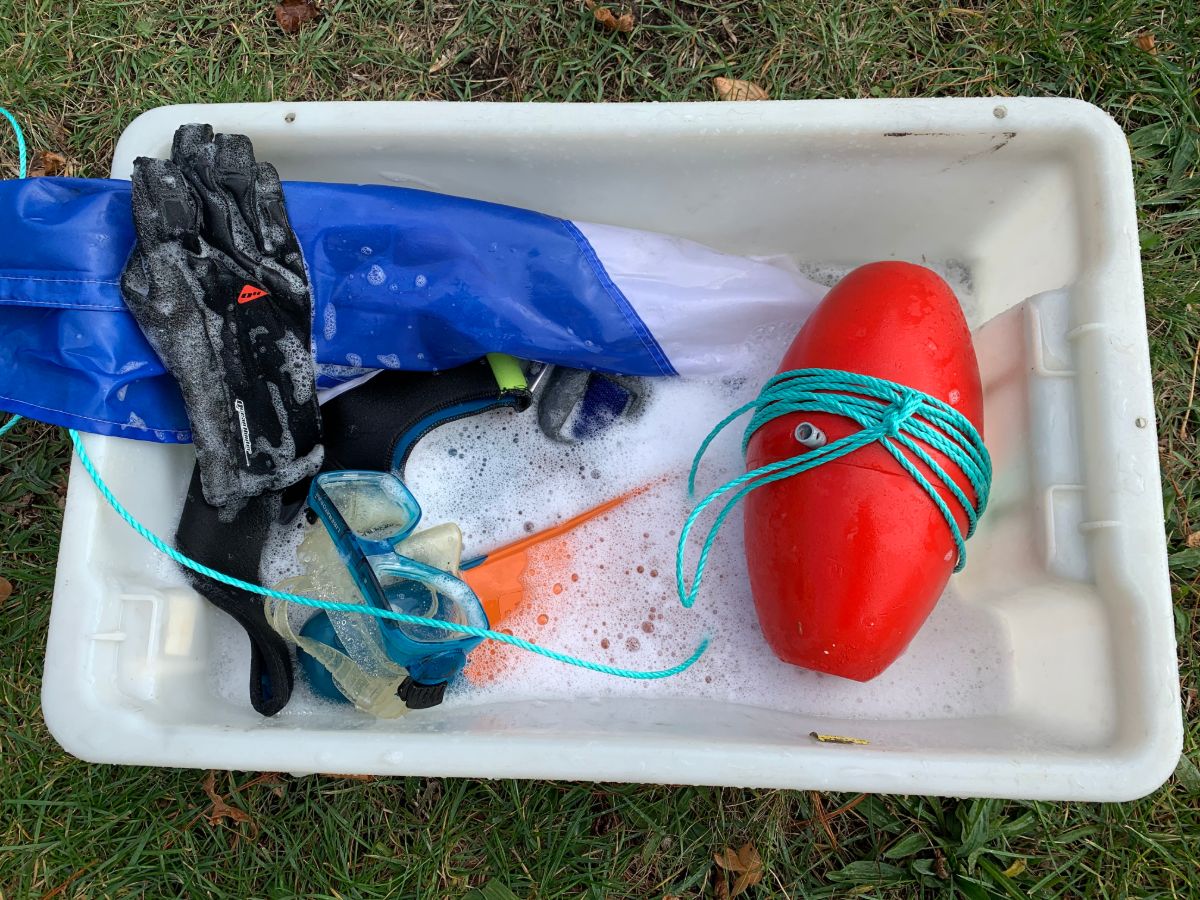Abalone disease
Abalone viral ganglioneuritis (AVG) is a viral disease which affects abalone. The result is the curling of the foot and swelling of the mouth, and leads to weakness and death of abalone.
AVG has no known effects on human health.
Abalone virus detections
AVG was detected in the Portland area in mid-2021.
Please see the Victorian Fisheries Authority website for current information on restrictions.
Abalone viral ganglioneuritis is a notifiable disease. If you see multiple sick abalone please call the Emergency Animal Disease Hotline on 1800 675 888.
Code of Practice: Biosecurity control measures for abalone viral ganglioneuritis
This Code of Practice aims to strengthen and protect the abalone industry in Victoria.
It was made with the help of people who catch, process and grow abalone.
Agriculture Victoria used "Rapid Risk Assessments" to identify the risk the virus poses to the various industries.
The Code helps stop AVG by showing people who are catching abalone as a business, diving or fishing for fun, growing or processing abalone how to do so safely.
Download
- Code of Practice: Biosecurity control measures for abalone viral ganglioneuritis (PDF - 1.9 MB)
- Code of Practice: Biosecurity control measures for abalone viral ganglioneuritis (WORD - 560.5 KB)
Factsheets
Factsheets about abalone disease are available on the Victorian Fisheries Authority website in English, Chinese and Vietnamese.
Other information
For the latest information from New South Wales visit the DPI NSW website.
For the latest information from South Australia, including restrictions on abalone movements, visit the PIRSA website.
For an overview of the national situation visit the Outbreak website.
How to reduce the spread of abalone disease
Check: all vessels, fishing, diving and surfing equipment and remove anything including, water, sand or seaweed. Check your catch for signs of illness.
Clean: boats at home or at a commercial car wash. Wash your wetsuits, fishing and diving equipment with fresh, soapy water.
Dry: all boating, fishing and diving equipment completely before heading out into the water again.
You must not use abalone as bait or throw abalone shell or gut into the ocean.

Presence and spread
The disease, which is caused by a herpesvirus, was first detected in Victoria in December 2005. Before the detections in 2021, the last recorded instance of disease in Victoria was in January 2010 at Cape Otway.
The highest risk of spread is through the water from infected abalone or abalone product (offal, shells or mucus). There is also a risk of it spreading through fishing equipment (including wetsuits, anchors, rock lobster pots and ropes) and by people who have come into contact with infected abalone.
The disease can cause high mortalities in both farmed and wild abalone populations. To date, species known to be susceptible to AVG in Australia are greenlip abalone (Haliotis laevigata), blacklip abalone (Haliotis rubra) and hybrids of these two species.
AVG is a notifiable disease. If any divers suspect AVG in abalone, please report it immediately to the 24-hour Emergency Animal Disease Hotline on 1800 675 888.
Symptoms of AVG
In wild abalone in Victoria, many abalone may die so usually only shells will be seen on the ocean floor as other fish will eat the abalone quickly.
If you find abalone with its meat still there you may see that it:
- has swollen mouth parts, occasionally with the mouth coming out from under the foot
- has a curled frilled edge
- cannot stick to the rock
- cannot right itself.
Biosecurity
The best way to ensure we don’t spread aquatic pests or disease is to follow good hygiene practices everywhere in Victoria.
More information about Biosecurity Control Measures is available on the Victorian Fisheries Authority website.
General decontamination advice for boats
- Check: and remove seaweed or animals attached to your boat or equipment before you move location. This includes hoop nets, fishing line and reel, diving gear, the deck, motor and anchor.
- Check: your vessel when you get to shore. Remove any seaweed or animals and put them in a rubbish bin. Don’t empty your bilge tank until you are washing your boat away from shore.
- Clean: your entire boat and any equipment used at a commercial car wash or at home. Clean it thoroughly from top to bottom with fresh soapy water. Rinse your boat with fresh water. Do the same with any gear you have used.
- Dry: your boat and any fishing/dive equipment fully before you use it again.
General decontamination advice for divers
Please wash all your dive equipment away from the water's edge so that run-off with soap or detergent does not affect the health of our waterways. It should also be done as soon as possible after leaving the water.
If you live or have accommodation in the area, you can clean your equipment when you return home. If you are a visitor and intend to launch your boat at many locations, the vessel should be taken to a car wash or service station with washdown facilities before you move location.
- Check: your catch. If it looks sick, stop diving immediately and call the Emergency Animal Disease Hotline on 1800 675 888.
- Clean: all other equipment in a bucket of fresh soapy water and leave it for 30 minutes. This includes your mask, snorkel, fins, gloves, weight belt, hood and catch bag, as well as your wetsuit, vest and regulator.
- Dry: all your equipment completely before you go diving again.
Disposal of abalone waste
Abalone shell, meat and gut must not be:
- shucked (taken from the shell) at sea
- dumped into the sea
- used as fishing bait.
Take your abalone catch home and dispose of the waste with your household rubbish.
Further information
AQUAVETPlan for abalone viral ganglioneuritis